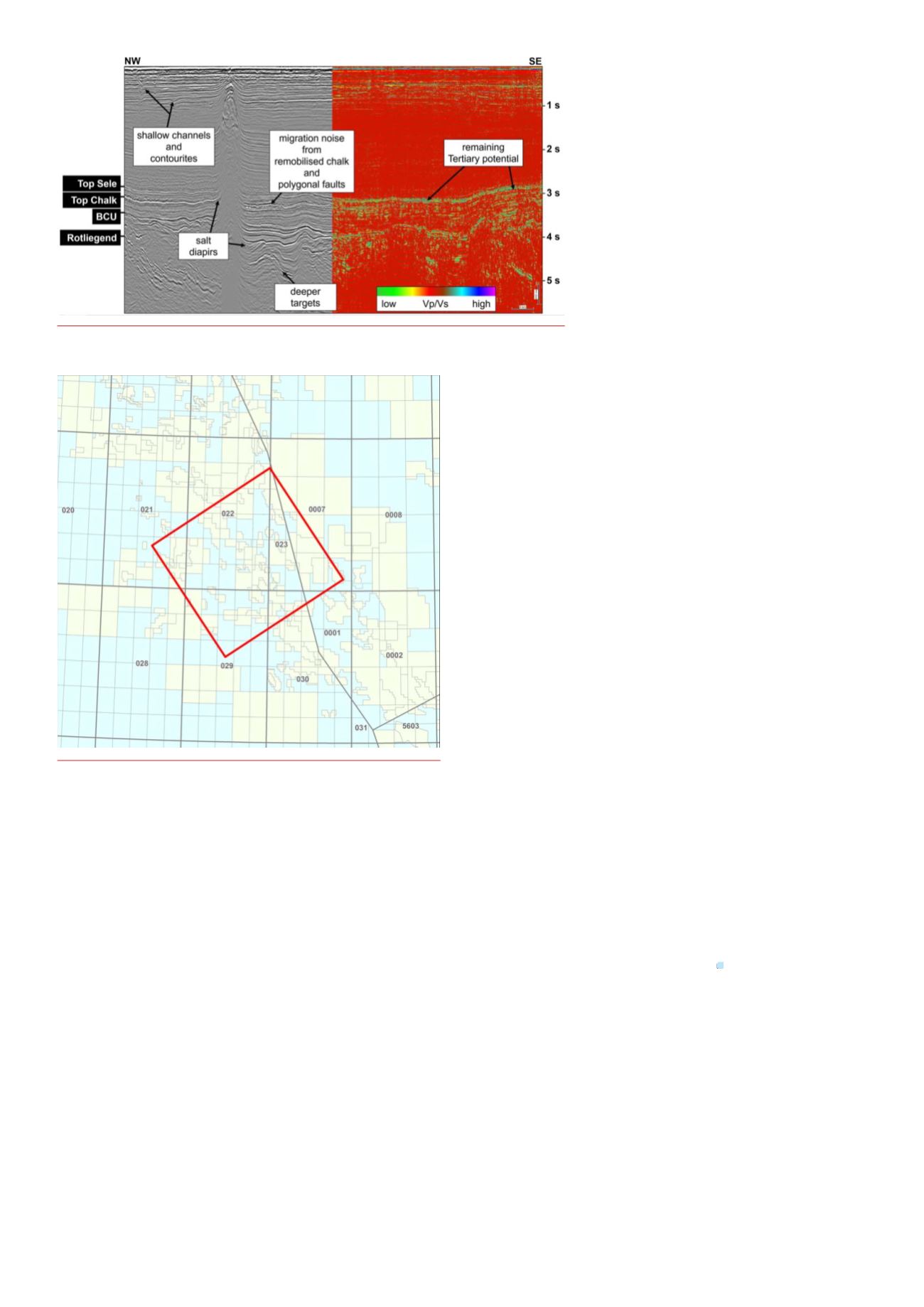
18 |
Oilfield Technology
May/June 2020
QI studies for reservoir development and near-field exploration aswell as
for 4Dproductionmonitoring.
Since the receivers are coupledwith the seabed, OBN systems record
not only the pressure but also the particlemotion, where the horizontal
componentmeasures the shearmodes. This provides a second S-wave
image of the subsurface, which complements the P-wave image and helps
to constrain rock and fluid properties.
Theright time for theCNS
OBNacquisition has historically only been considered for a small
proportion of the total number of seismic surveys conducted by the
industry despite highly attractive aspects of the solution. Node surveys
have generally beenmore expensive than streamer surveys because of the
large amount of time spent deploying and retrieving nodes on the seafloor.
For this reason, surveys have been limited to focused reservoir imaging
andmonitoring applications.
OBN contractors have respondedwith a new focus on resolving the
factors limiting the efficiency of the seabed seismic solution, both on
the source and receiver side. In the last fewdecades, the efficiency of
OBN technology has improvedwith longer node battery life and faster
deployment/retrieval methods.
Ongoing engineering efforts, combinedwith
operational innovation, have increased the potential
to achieve a step-change in seabed seismic efficiency
and cost effectiveness, e.g. the number of seismic
traces acquired per day by OBN surveys in the
Gulf of Mexico has tripled over the last 20 years.
4
OBN
is entering a newphase of maturity and has nowbeen
adopted globally as a leading imaging technology in a
variety of settings.
Large-scaleOBN–theright strategy for future
CNSdevelopment
When the objective for the OBN data is to achieve
high-resolution images of complex structures, the
size of the survey is no longer comparable to the
standard node patches deployed for 4Dmonitoring.
The imaging of complex salt diapirs requires an
extended shooting area around the deployed nodes. However, with
a reasonably well sampled, large-area node survey it is possible to
efficiently acquire larger source-receiver offsets (and therefore imaging
apertures) and achievemore efficient acquisition per square kilometre
through an economy of scale. By including adjacent geological targets
and increasing the survey size, OBN surveys becomemore competitive
than the typical small patch surveys generally acquired on a proprietary
basis. In addition, amore comprehensive analysis of the lateral extension
of complex structures joining up specific targets provides a wider
geological context.
This iswhy CGGMulti-Client, in conjunctionwithMagseis-Fairfield,
have designed the CornerstoneOBNprogramme to deliver subsurface
images of unprecedented quality in themost challenging areas of
theUKCNS. The first phase, which started inMarch 2020, will provide
approximately 2500 km
2
of full-azimuthdata suitable for fielddevelopment
and near-field exploration (Figure 6).
Thematurity of commercial OBN technology for large-scale, dense
exploration surveys is a key enabler behind this strategic shift. Specifically
for the shallowwaters of theNorth Sea, the development andmaturity
of efficient node-on-a-rope (NOAR)/node-on-a-wire (NOAW) acquisition
systems using reliable autonomous long-duration nodes ensures the
productivity required tomake such a survey economically viable. In this
specific case, the use of ZNodal OBN technologywill make it possible
to acquire high-quality seismic datawithminimal HSE risk. The system
is lightweight, making deployment faster and economical, with no
troubleshooting requiredwhile recording.
Thismulti-phase, multi-client programme covers reservoir targets in
HPHT areaswheremultiple complexities in the sedimentary overburden
pose challenges for seismic imaging using existing streamer data. OBN
datawill complement the existing high-quality Cornerstone streamer data.
Mastering the cutting-edge data-driven processing of OBNdatawill raise
the bar for the coming years in theNorth Sea.
Note
The author wishes to thank CGGMulti-Client, in collaboration with Magseis-Fairfield, for
giving their permission to publish this article. All images are courtesy of CGGMulti-Client.
References
1.
WILSON, A. J. S., and DUTTON, D. ‘How tomake a Step Change in Seismic Image
Quality – Experience from the Golden Eagle Field’, 81
st
EAGE Conference & Exhibition,
(2019).
2.
ZHANG, Z., MEI, J., LIN, F. , HUANG, R., andWANG, P., ‘Correcting for salt
misinterpretation with full-waveform inversion,’ 88
th
SEG Annual International
Meeting, (2018).
3.
WANG, P., GOMES, A., ZHANG, Z. andWANG, M., ‘Least-squares RTM: Reality and
possibilities for subsalt imaging,’ 86th SEG Annual International Meeting, (2016).
4.
LI, Q., SLOPEY, W., ROLLINS, F., BILLETTE , F., UDENGAARD, C., and THOMPSON, B.,
‘Leading a new deep water OBN acquisition era: two 2017-2018 GoMOBN surveys,’
88
th
SEG Annual International Meeting, (2018).
Figure 5.
Seismic line along the CNS superimposedwith the inverted Vp/Vs attribute. The arrows
indicate themost difficult challenges driving the need for OBNdata.
Figure 6.
LargeOBNmulti-client survey in the CNS designed to provide
exceptional imaging of deepHPHT reservoir targets obscuredby salt
diapirs.








